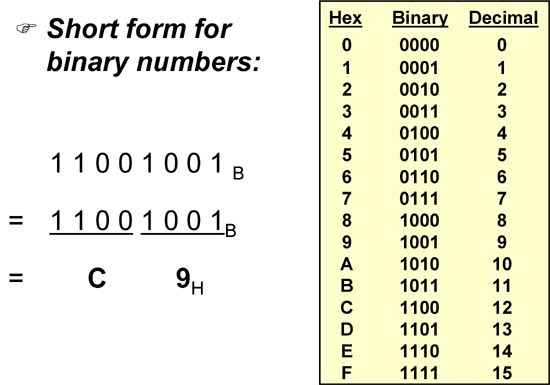Numbering Systems (Part Four of Four: What Hex is Used For)
Hexadecimal (or hex for short) is perhaps most often used in practice as a short form for binary numbers.
Since 161 = 24, conversion from binary to hex is simple.
Just segment the binary number into groups of four bits, and convert each set of four bits individually to their hex equivalent.
Why is hexadecimal used in this manner? Because the binary number system requires so many symbols to represent a given quantity.

Consider the binary representation of 201D: 11001001.
For readability, instead of commas we use semicolons: 1100:1001.
The hexadecimal equivalent of this number is C9.
The hex version uses only 1/4 the symbols, and so is easier to write and to pronounce.
So in practice, hexadecimal is used as a short form for writing binary numbers down on pieces of paper and displaying them on computer screens.
Hex is used to display LAN interface MAC addresses, which are 48 bits long, using 12 characters. Hex is also used to display IPv6 addresses, which are 128 bits long.
Last point: hex is for humans. It is a short way of writing binary numbers on paper. Computers know nothing of hex; computers only know about 1s and 0s: binary.









